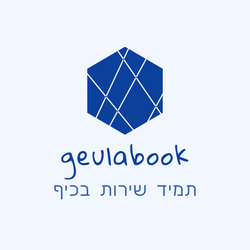The Megillat Esther is included in the part of the Tanach that is called Ketuvim in general and in particular also belongs to the specific collection that also reads five scrolls. In the Bible, there are five scrolls in order in the Tanach, the Shir haShirim, Ruth, Eiha, Ecclesiastes and Esther. This order is related to the order of the holidays and festivals (the date of the destruction of the house is found separately) according to the calendar of days in which they are called and they are - Pesach, Shavuot, Tisha B'av, Sukkot and Purim. And in fact, the Megillat Esther has a special status because this book is dedicated to a tractate of Shlomo of Mishnah and Gemara which is called Megillah that way. A story of a scroll about an initiative to destroy them by the evil Haman Haggagi of the Jews of the Kingdom of Persia during the reign of King Ahasuerus. And it is told about the purchase of the unprecedented struggle, how Queen Esther and her cousin Mordechai the Jew thwarted Haman. The scroll ends with a reminder of the remembrance of these events, the holiday of Purim and its mitzvot were established - the delivery of dishes, gifts to the pilgrims and the holding of a feast. And during Purim we read the Megillah twice, on the night of the holiday and on its day, it is one of the mitzvot of the holiday. Historical background of a story about the period of King Ahasuerus, which in many studies is identified close to Wadi as the period of Heshirash I (pronounced "Heshyarsha", as Sarxes in the Greeks), who reigned in Persia for about twenty years in the fifth century BC (465-485).
Similar to the biblical Ahasuerus. His kingdom extended from India to Kush, and he is described by Herodotus and others as fond of women and wine. A Greek translation which is called the Septuagint translation in the book of Esther the king is called Artaxerxes, therefore there is a dispute among scholars who believe that the literary character of the king was inspired by the real character of another Persian king, such as Artaxerxes I. But also other researchers, who extend the writing of the scroll to another time and extend it to the Hellenistic period, believe that it alludes to historical figures and events from this period. There are also those who believe that the story is mainly fictional and does not refer to any historical events, and the character of Ahasuerus is primarily a literary character.
Some see the Megillat Esther as the most nationalistic book in the Bible: "A book that reflects a burning faith in the vitality and eternity of the Jewish people. Paradoxically, the unique national character of the people is revealed precisely in the national anomaly of existence in exile, when God's presence is no longer visible. The Megillah examines the Jewish existence in the Diaspora from a national perspective, emphasizing the uniqueness of the people and believing in its eternity despite the difficult challenges of its existence."
What is unusual in the Book of Esther is that the name of God is not mentioned. Every place where it is said in the Book of Esther, King Achshurosh in Achshurush the scripture speaks, and every place where it is said a king just in the king of kings the scripture speaks, and he said "as the king's kindness in wine" - as God's heart is in the wine of the Torah (Midrash Abba Gorion).
During the Mishna period, they would read the Megillah on the days from 11 Adar to 12. Advance the time from 11 to 14 for the villagers so that the reading day would fall on Monday or Thursday, days when the people of the villages would gather in the cities to provide water and food, and sages would sit on Mondays and Thursdays to instruct them. The main reading is for the people of the cities on the 14th day, and for the people of the walled cities from the days of Joshua ben Nun on the 15th day, each place according to the time they rested from the war. Reading and hearing the Book of Esther is a central mitzvah in the Purim celebration.

